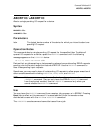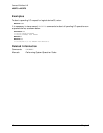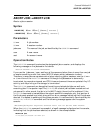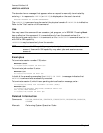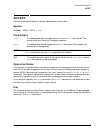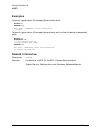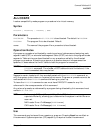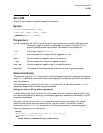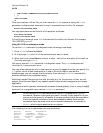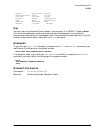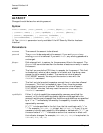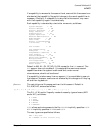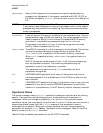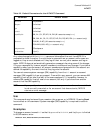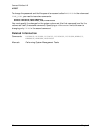
Chapter 2 47
Command Definitions A-B
ALLOW
ALLOW
Grants a user access to a specific operator command.
Syntax
ALLOW FILE=formaldesignator[ ;SHOW]
ALLOW[ @.@ | user.@ | @.acct | user.acct
;COMMANDS=command [ ,command,...]
Parameters
formal- designator An ASCII file name, which may consist of one to eight alphanumeric
characters, beginning with an alphabetic character. It may be fully or
partially qualified and may be back-referenced in a file equation.
SHOW Lists input lines on $STDLIST.
@.@ Grants access to all users whether logged on or not.
user.@ Grants access to a specific user in all accounts.
@.acct Grants access to all users in a specific account.
user.acct Grants access to a specific user in a specific account.
command The names of those commands to which the user is granted access.
Operation Notes
The operator uses the ALLOW command to distribute specific operator commands to system
users. ALLOW specifies which users may execute operator commands, and which commands
they may execute.
You may specify an indirect file with the ALLOW command, or you may execute ALLOW in
subsystem mode. Each of these is explained below.
Using an indirect file to allow commands
To allow commands via an indirect file, you create a file that contains records identifying
the users and accounts to whom you are allowing operator commands, followed by the list
of commands allowed.
Using an indirect file with the ALLOW command is particularly convenient for system
administrators since, once you make the file, you can reuse it to disallow the set of
commands (via the DISALLOW command) or to allow the same set of commands again.
Here is an example of an indirect file:
EDITOR
HP32201A.07.17 EDIT/3000 TUES, MAY 29, 1994, 5:08 PM
(C) HEWLETT-PACKARD CO. 1985
/ADD
1 SUSAN.PAYROLL;COMMANDS=ALTJOB,ALTSPOOLFILE



